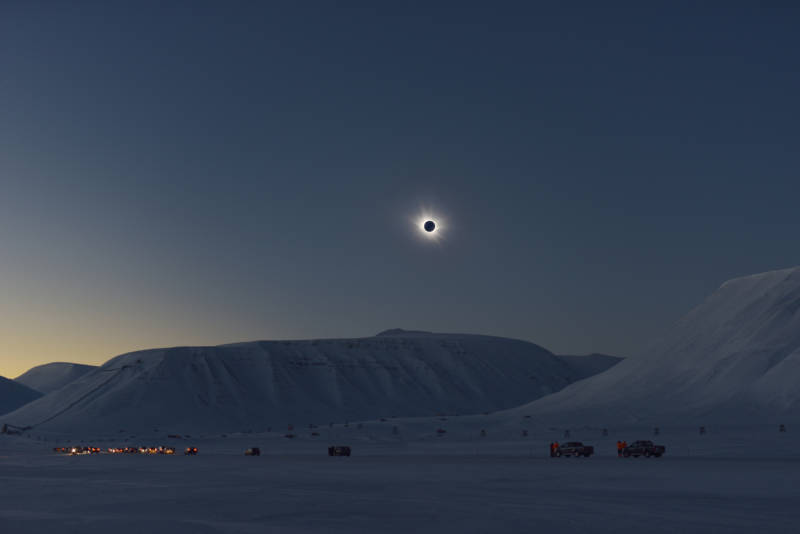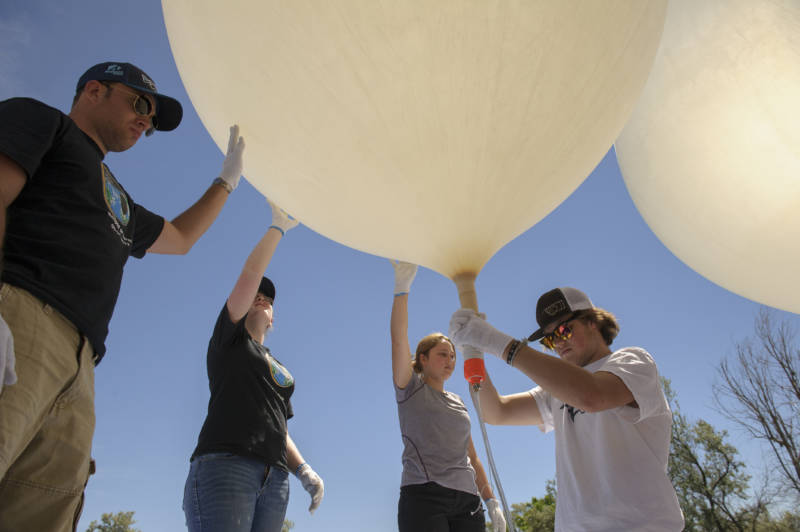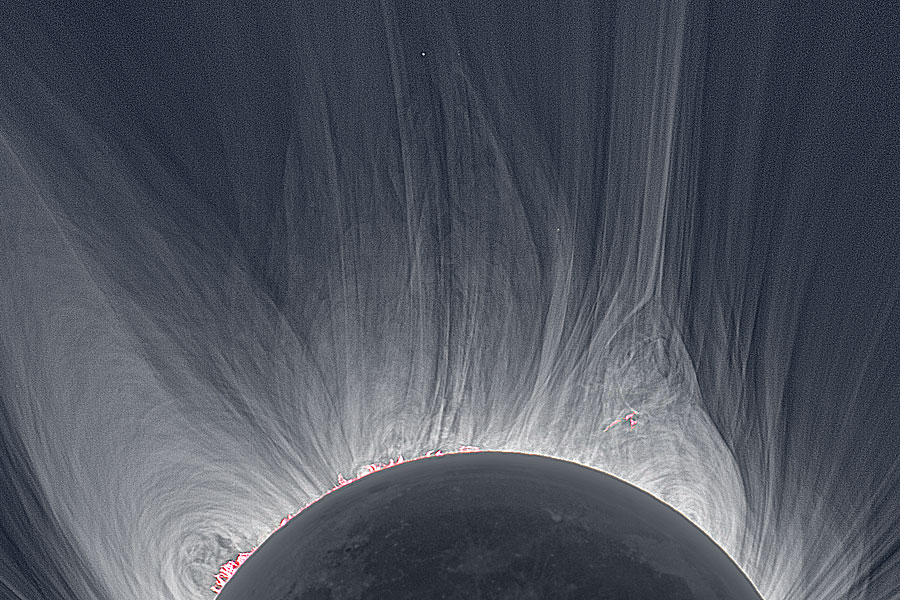Eclipse Scientists Probe the Mysteries of the Sun's Atmosphere
Eclipse Scientists Probe the Mysteries of the Sun's Atmosphere
The wait between total solar eclipses, if you’re planning to stay in one particular location, is a very long time. On average, around 400 years.
But, if you’re willing to go anywhere on the planet, the wait is around 18 months. And if you’re a scientist studying the sun, chances are you’re happy to travel just about anywhere.
“Asking what we’re doing seeing another eclipse is like asking a cardiologist who looked at somebody’s heart for two minutes, a year and a half ago, does he want to look at another patient,” says Jay Pasachoff, chair of the International Astronomical Union’s working group on solar eclipses.
During a total eclipse, the moon gets between us and the sun, like an umbrella. Blue sky turns dark, revealing a sight that is normally hidden. In that darkened sky is the sun’s atmosphere, the corona—a silvery, waving halo of hot, constantly changing gas.
“Every time we look [at the corona] there’s something different,” says Pasachoff.
Big storms in the corona—which are like burps of fiery plasma from the sun—can damage satellites, harm astronauts and disrupt power grids. The more scientists know about the corona, the better they can predict these big storms.
And the only time researchers can see all of the corona really well is during a total eclipse.
“It’s amazing that the moon at this moment in our history is exactly the same size of the sun, apparently,” says Alan Gould, former planetarium director (and current volunteer) at the Lawrence Berkeley Hall of Science. “And so it exactly blocks the disc of the sun.”

Leaving the brilliant corona visible around the black circle of the moon.
The sun is 400 times larger than the moon, but it’s 400 times farther away from us, so it looks the same size in the sky. Millions of years ago, the moon was closer and covered up more of the sun. In the distant future it’ll be farther away, and appear too small to see total eclipses.
“We are living in such a fortunate time in that regard” says Gould, “so we get to see the entire corona in its glory.”
That’s why astronomers are traveling from all over the world to see the eclipse on August 21st. And some of them will be studying one of the biggest mysteries about the sun; it has to do with temperature.
“So the sun is about 10 million degrees (Celsius) at the center,” Gould says. “Really, that’s where all the action is. All the nuclear fusion is happening there.”
The surface is a lot cooler: about 5,538 degrees Celsius. It would make sense for the corona streaming off the surface to be cooler still. But it’s not. It’s a lot hotter.
”In fact, it gets up to a million degrees” says Gould. “There are theories about why that is, but it’s really not known.”
It’s not for lack of trying.
“I like to joke that the problem has been solved,” Pasachoff says. “It’s been solved by twelve different people in twelve different ways. In other words, we don’t have a solution.”
One of the people working toward a solution on the day of the eclipse will be University of Hawaii astronomer Shadia Habbal. She leads an international team of scientists known as the “Solar Wind Sherpas” who travel the world in pursuit of solar science.
This is a very special eclipse for her.
“Usually most eclipse paths cover a lot of ocean, or they go over islands, ” she says. “This one is like 3,000 miles of solid land.”
On the day of the eclipse Habbal will be overseeing five different observation sites within the “path of totality“—the band running across the U.S. where the sun will be entirely blocked out.
By spreading out the equipment, Habbal’s team will get the chance to see the corona’s behavior over several hours.
And if you want to be part of scientific history too, you can. The Eclipse Megamovie Project is a collaboration between Google and UC Berkeley to compile photographs from the public into a film. Scientists will be able to use the images for years to study dynamics of the corona.
Other researchers will be use the eclipse to learn more about the Earth itself.
“Having this dark shadow of the eclipse is really kind of a shocker to the atmosphere,” says Angela Des Jardin, director of the Montana Space Grant Consortium.
She’s overseeing a project to launch high-altitude balloons that will live-stream the eclipse as well as collect weather data.

“So this is unprecedented opportunity for us to actually be able to collect all this data about how the atmosphere changes,” Des Jardin says.
In fact, August 21st could possibly become the single greatest scientific-data-collecting day in American history. You can be part of it by joining one of the many citizen science projects.
Read more KQED eclipse coverage:
You Know About This Summer’s Spectacular Solar Eclipse, Right?
Don’t Be in the Dark: Answers To Your Burning Questions About the August Eclipse
Help Make History: Eclipse Projects for Citizen Scientists
Americans Prepare for First Coast-to-Coast Total Solar Eclipse in Century (KQED Forum)
